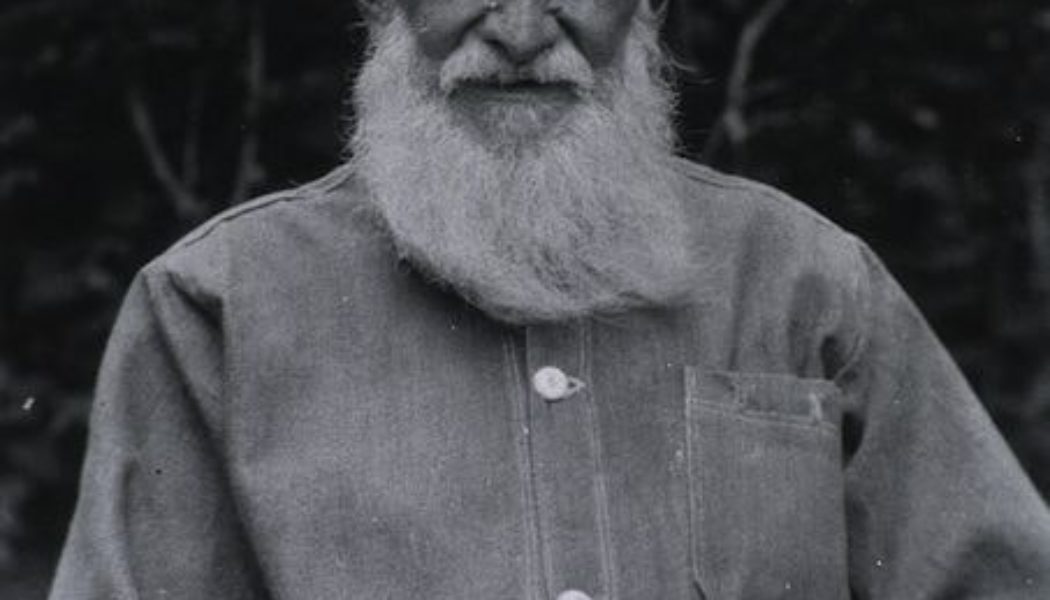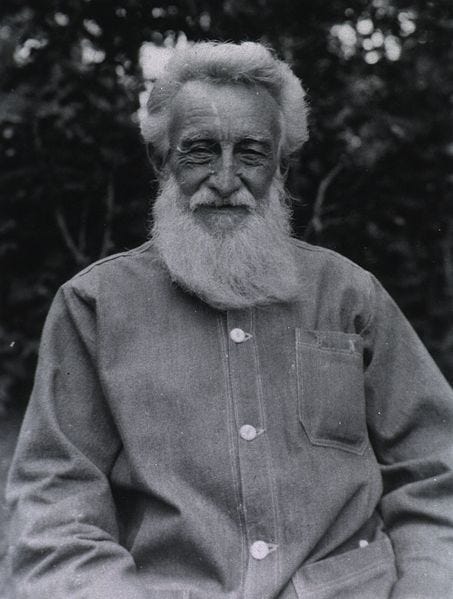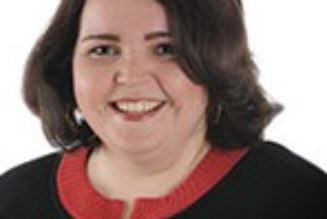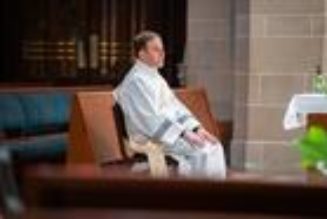Hey everybody,
Greetings from Baltimore, for today’s USCCB edition of The Tuesday Pillar Post.
We are here in Charm City because the U.S. bishops’ conference has begun its first in-person general assembly since November 2019.
Consider this kind of a special edition. Below, I’ll walk through the agenda, as a guide to what the bishops will be up to over the next few days.
In the room
The conference meets twice each year — every November in Baltimore, and every June in some other city. But before the June 2020 meeting, COVID came along, and the bishops first saw a meeting cancelled, and then found themselves, like a lot of us, meeting on Zoom.
But as everyone knows by now, a virtual meeting is no substitute for the real thing. There is an ineffable quality to being with people face-to-face, which is not actually replaced by a digital conversation.
Everyone paying attention to ecclesiastical life in the United States knows that this has been a particularly rancorous year for American bishops. It began with a presidential statement on the inauguration of President Biden, and then an overt and public repudiation of that statement from another bishop — a rare public expression of unchecked disagreement among bishops, which is usually veiled behind the rhetoric of ecclesiastical protocol and etiquette.
Since that event, bishops have been open about their deep split on the pastoral and theological issues surrounding a draft document on the Eucharist, amid a string of efforts to keep the document off the conference agenda or see the Vatican intervene.
To some observers — and certainly to this observer — those disagreements have been characterized by a tone at times resembling more the coarse zero-sum politics of Washington than a charitable engagement of mutual discernment.
And it does not seem accidental or coincidental that some bishops have engaged less like persons and more like tacticians at the same time that they have been restricted from personal engagement with one another.
Neither families, nor parishes, nor episcopal conferences can be sustained by the flimsy and impersonal kinds of relationships on offer from Zoom or FaceTime. After the last few years, it is clear to most of us that gathering in the Lord’s name must include the actual gathering, at least if it is to be fruitful.
It is not just that the meta-verse is not real human engagement. It is that online and virtual engagement may be worse than nothing — may well game-ify our relationships and depersonalize our disagreements, in a way that allows us to focus on scoring points, beating the level, or winning the day, no matter the cost.
It is no small wonder people say things to one another on social media that they would be horrified to utter with someone in the room.
This is why it is encouraging that bishops spent time together in adoration of the Blessed Sacrament yesterday, with confessions on offer, and with a preached exhortation from Archbishop Joseph Kurtz, which focused on mutual encouragement and fraternity.
That period, I am told by several bishops, was followed with some honest and thoughtful pastoral conversations on the Eucharist in the life of the Church — which took place in an executive session behind closed doors.
Now, I am not so green, or so Pollyannish, as to think that being in the same room together is enough to resolve the long-simmering fissures among the episcopal conference over serious theological matters, or even the proxy wars over documents that emerge from those disagreements.
And it’s worth remembering that the November 2019 meeting — the last in-person meeting — featured a few sharp disagreements among bishops, at least one of which went “viral” on social media. It is entirely possible that by mid-day today, we could find that the bishops are locked in the same interminable debates they had at their June virtual meeting.
But the Resurrection is a source of hope. Pentecost was, and is, a real event.
And it seems reasonably Christian to allow hope to triumph over experience; to believe it is at least possible that gathered together as brothers, and praying together as brothers, the U.S. bishops might better live, and engage, and even disagree, as brothers do.
“Where two or more are gathered in my name,” says the Lord, “there I am among them.” Even when they are gathered for an episcopal conference.
The agenda
The schedules for this meeting have been more-than-a-little fluid. While usually the agenda is available in advance, a schedule came out for this meeting only yesterday, and seems to be at least somewhat in flux.
But, as of now, Tuesday’s USCCB agenda is fairly well-packed, at least in the public portions — which will seemingly come after a brief executive session in morning, presumably for more discussion on the Eucharist document.
Among the highlights of the public portion, bishops will:
-
Hear an address from apostolic nuncio Archbishop Christophe Pierre. For Pierre, who in January reached the Vatican’s retirement age of 75, the might be his last visit to the USCCB.
-
Hear an address from Archbishop Jose Gomez, the conference president. The address comes a week after Gomez gave a speech on “wokeness” as a religious movement that has made a lot of headlines, and been both widely praised, and widely criticized. I don’t expect the archbishop will deliver the same themes here in Baltimore, instead, I’d guess he’ll focus on unity, and perhaps unity in truth, among his brother bishops.
-
Elect new chairmen for six USCCB committees. Of course, those elections are not horse races. But Ed and I asked, “What if they were?” We broke down the odds last week.
-
Elect a new general secretary, effectively CEO, of the bishops’ conference, after the resignation of Msgr. Jeff Burrill in July. The race is between two conference staff members: interim general secretary Fr. Michael Fuller and a staffer in the clergy and vocations office, Fr. Daniel Hanley. Following the conference custom of electing the deputy to replace the general secretary, expect Fuller to be elected handily.
-
Have the opportunity to ask questions about a draft text of “The Mystery of the Eucharist in the Life of the Church,” the long-awaited conference document on the Eucharist. A formal vote on the document, and the possibility of protracted debate, will come on Wednesday, though the discussion today could also prove lengthy.
-
Hear a presentation on the new Book VI of the Code of Canon Law by Archbishop Charles Scicluna of Malta, an internationally regarded canonical expert. (canon lawyers like me are already excited.)
On Wednesday, the bishops will:
On Thursday, the bishops will go back to their closed-door executive session, but I’ll be on an early flight home. Thursday, you see, is Mrs. Flynn’s 40th birthday. And while there are few things I love more than a USCCB plenary assembly, Mrs. Flynn is one of them — in fact I cherish her far more than parliamentary debates over the liturgical calendar. So if you would, I’d be grateful if you keep my beloved wife in your prayers on a milestone of a birthday.
Beyond the room
There are plenty of things happening around the bishops’ conference meeting here in Baltimore, a swirling gyre of characters and events — a vortex, if you will — all weighing in on what they hope the bishops will do and say.
One event said it aimed to pray for the bishops and unborn, its attendees sported “Enforce Canon 915” shirts and signs. The other event, called “Bread not Stones,” said bishops should not restrict anyone from receiving the Eucharist.
I went to both events yesterday, and, well, here’s what happened.
Well beyond the bishops’ hotel in Baltimore, Cardinal Angelo Becciu, and his attorneys are heading back to court in the Vatican this week, for the third session of the sprawling Vatican finance trial. So what’s the latest? And can Becciu convincingly claim that he is really just a simple civil servant, surprised — shocked — really, to discover corruption inside the Vatican department at which he worked for years? Ed Condon breaks it down.
—
Mahony maligned the prospect of a passing a document on the Eucharist, because the draft text on the source and summit of the faith, “is not something that can be put into a pamphlet form.”
Pamphleteers the world over likely cheered the cardinal’s ringing endorsement of their work.
Mahony also lamented that, in his view, the Eucharistic document “was intended primarily to go after and penalize Catholic legislators,” and expressed sympathy for pro-choice politicians “who are pressured by some in the Church to make all of the decisions based on Catholic Church doctrine.”
The cardinal even said he was “thrilled” by a June letter from 60 Catholic members of Congress, which defended legal protection abortion. “I read it through two to three times, and I said, ‘This is us! This is the Church!’”
The positions expressed in Mahony’s interview are not especially surprising; they represent the cardinal’s long-standing approach to pastoral and theological issues.
But it is surprising that Vatican News — again, the in-house media network of the Holy See — saw fit to ask Mahony to effectively interpret the USCCB for a global readership? Why?
Because the cardinal, you see, is widely known in the U.S. for covering up or reassigning dozens of priests accused credibly of abuse, and impeding canonical and civil investigations into cases. His record would likely be ripe for a Vos estis lux mundi Vatican investigation, in fact, if it weren’t already so well known.
So how did it happen that a cardinal widely associated with the Church’s sexual abuse scandals of recent decades — who caused a bit of scandal when he showed up at an episcopal installation in 2019 — was effectively tapped as the Vatican’s commentator on American church affairs?
My bet is that Archbishop Gomez, USCCB president and Mahony’s successor in L.A., is asking himself the very same thing.
Perhaps it’s because three years after McCarrick, sexual abuse, misconduct, and coercion don’t have a time slot on this week’s agenda.
Brother Joseph
Honolulu’s Bishop Larry Silva will consult with the U.S. bishops on Wednesday about the possible canonization of Servant of God Joseph Dutton, known in Hawaii as “Brother Joseph.”
Born Ira Dutton in 1843, he was a Vermonter who fought in the Civil War, married in 1866, and found himself, sadly, estranged from his wife by the very next year. After his marriage broke up, Dutton drifted and worked a few jobs, but started drinking heavily. By the 1870s, you could say he was usually drunk.
In 1876 Dutton quit drinking, cold turkey, but he kept drifting. He had this interior sense that he should penance for his decade of hard living, and the only penitential organization of which he was aware was the Catholic Church. It took him a while, but on his 40th birthday, in 1883, he was baptized a Catholic. He took the name Joseph.
Dutton stayed for a while at the Trappist Abbey of Gethsemani in Kentucky, but he wanted to serve the poor. And he didn’t like sitting still. Eventually, he boarded a steamer for Hawaii, to find Fr. Damien de Veuster (now St. Damian), the Belgian priest who had given his life over to serving lepers.
Joseph said he was there to help, and he was there to stay. And he did both. Even after Fr. Damien’s death, he stayed in Hawaii until his death in 1931, caring for lepers, and later for indigent boys and men.
He was a layman, and a secular Franciscan, but they called him “Brother Joseph” because he lived like a brother to all. When he died, it was discovered that his reach went far beyond Hawaii — he was a voluminous correspondent with people looking for faith, or for answers. His address book contained 4,000 names, bags of mail routinely came to him weighing 50 pounds.
Thank you for your ongoing support to The Pillar, thank you especially to new subscribers and readers. If you’re here in Baltimore, stop me in the corridor, and I’ll give you a sticker.
If you want a play-by-play, blow-by-blow, parliamentary-motion-by-parliamentary-motion account of the USCCB meeting these next few days, follow my live-tweeting of the action on Twitter.
As always, if you think we make news worth paying for, and you want us to keep it up, become a subscriber here:
And tell your friends:
Most especially, be assured of our prayers for you, and please continue to pray for us. We need it.
From the City the Cal Built —
Yours in Christ,
JD Flynn
Editor-in-chief
The Pillar
Editor’s note: This report initially stated that Cardinal Mahony was in 2013 barred from public ministry in the Archdiocese of Los Angeles since 2013. In fact, after that prohibition was reported in 2013, the Archdiocese of Los Angeles clarified that Mahony remains in good standing and is therefore able to exercise priestly ministry. The Pillar regrets the error.
Join Our Telegram Group : Salvation & Prosperity











